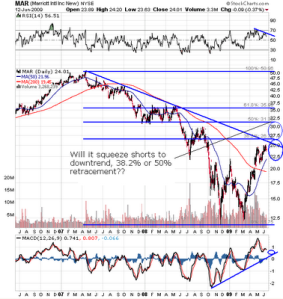Study Snapshot: Traveling through the recovery
 Even after the general economy recovers, the environment will likely still contain challenges for travel companies, writes Deloitte in their latest whitepaper titled "Traveling through the recovery - Ways THL companies should consider navigating the upturn". While certain regions will show improvement in occupancy rates, the industry will need time to heal.
Even after the general economy recovers, the environment will likely still contain challenges for travel companies, writes Deloitte in their latest whitepaper titled "Traveling through the recovery - Ways THL companies should consider navigating the upturn". While certain regions will show improvement in occupancy rates, the industry will need time to heal.
Over the  last several years, tourism, hospitality, and leisure (THL) companies have experienced a downturn of historical proportions. Companies were glad to see 2009 come to an end. The protracted US recession that began in late 2007, and the global meltdown of financial markets that occurred a year later, led to a sharp cutback in spending from businesses and consumers. As both leisure and business travel contracted, many sectors suffered multi-year declines that were the worst ever recorded by industry-watchers.The US Travel Association estimates that total travel expenditures in 2009 were $704.5 billion, representing a 9% decline from 2008. Spending declines have been across the board and include international visitors and domestic travelers.
last several years, tourism, hospitality, and leisure (THL) companies have experienced a downturn of historical proportions. Companies were glad to see 2009 come to an end. The protracted US recession that began in late 2007, and the global meltdown of financial markets that occurred a year later, led to a sharp cutback in spending from businesses and consumers. As both leisure and business travel contracted, many sectors suffered multi-year declines that were the worst ever recorded by industry-watchers.The US Travel Association estimates that total travel expenditures in 2009 were $704.5 billion, representing a 9% decline from 2008. Spending declines have been across the board and include international visitors and domestic travelers.
Business travel, a large source of revenue for many hotel chains, has also been sharply curtailed. The declines came as companies looked for cost savings amid falling profits. Businesses cancelled many conferences and events or turned to video-conferencing. Increased scrutiny from the public on corporate travel spending was also partly responsible for these cutbacks.
 The lodging industry experienced particularly steep declines during the recession. Smith Travel Research (STR) reported that occupancy fell for three consecutive years; in 2009 it was down to 55% — far below the 63% average of the last 20 years. Revenue per available room (revPAR) in 2009 dropped by a record-setting 16.7% and was the second consecutive annual decline. The luxury hotel segment has suffered the worst decline of any segment, with revPAR down 24.4% in 20092. A sobering January 2010 comment from STR in HotelNewsNow.com was that “Every day in 2009, the industry sold 159,000 fewer rooms, and revenue was down more than $41 million. That amounts to 58 million fewer rooms, and $15.2 billion less in revenue. Those are huge numbers3.” Other hotel-related results were equally grim. In 2009, the hotel industry’s estimated pre-tax income, at $12.8 billion, was half of its 2008 figure, according to Standard & Poor’s. The industry’s financial troubles have led to increased defaults on mortgages, and hotel construction has been sharply curtailed as a result of the weakened demand.
The lodging industry experienced particularly steep declines during the recession. Smith Travel Research (STR) reported that occupancy fell for three consecutive years; in 2009 it was down to 55% — far below the 63% average of the last 20 years. Revenue per available room (revPAR) in 2009 dropped by a record-setting 16.7% and was the second consecutive annual decline. The luxury hotel segment has suffered the worst decline of any segment, with revPAR down 24.4% in 20092. A sobering January 2010 comment from STR in HotelNewsNow.com was that “Every day in 2009, the industry sold 159,000 fewer rooms, and revenue was down more than $41 million. That amounts to 58 million fewer rooms, and $15.2 billion less in revenue. Those are huge numbers3.” Other hotel-related results were equally grim. In 2009, the hotel industry’s estimated pre-tax income, at $12.8 billion, was half of its 2008 figure, according to Standard & Poor’s. The industry’s financial troubles have led to increased defaults on mortgages, and hotel construction has been sharply curtailed as a result of the weakened demand.
By late 2009, however, signs were emerging that the worst was over for travel-related companies, both in the US and abroad. As shown in the chart, the hotel industry’s year-over-year comparisons, while still negative, are inching their way toward positive territory.
Bottom line, it may be a slow and difficult turnaround in the days to come. As a result, travel, hospitality and leisure companies (THL) may need to prepare themselves for the long haul. Many will need to do more with less money and less resources – and be clever about it.
Even after the general economy recovers, the environment will likely still contain challenges for THL companies. While certain regions will show improvement in occupancy rates, the industry will need time to heal.US travel-related spending in 2010 expected to be helped by the anticipated passage of the Travel Promotion Act, which will likely increase advertising in foreign markets to encourage international travelers to visit the US. Additionally, the improving economy should ease budget constraints for both individuals and businesses. In early 2010, analysts were already noting that corporate meetings and conventions appeared to be picking up, following the steep declines of the last two years.
Despite recent signs that a recovery has arrived, most economists do not expect it to be robust. The economy is still far from healthy. Unemployment is likely to remain high in 2010 and growth in consumer spending should continue to be subpar over the next year or so as Americans work at paying down the high debt they accumulated during the house-as-ATM boom period of the mid-2000s. They also are expected to be saving more for retirement, particularly as the oldest Baby Boomers start turning 65 in 2011. We expect tourism, hospitality and leisure to be one of the last sectors to experience a turnaround, given that most spending in this area is highly discretionary.
Bottom line, it may be a slow and difficult turnaround in the days to come. As a result, THL companies may need to prepare themselves for the long haul. Many will need to do more with less money and less resources – and be clever about it. The report suggests several areas that THL companies might want to consider to help them “own the upturn” as the market slowly begins to heal. The following five insights may offer some of the best opportunities for hotel companies to improve cost expenditures, streamline operations, and connect with customers:-
Information-Driven Enterprise Resource Planning (ERP) Initiatives
-
Virtualization and Information Technology (IT) Cost Reduction
-
Retaining and Managing Talent
-
Strategic Marketing
-
Strategic Cost Reduction

COMMENTS